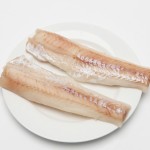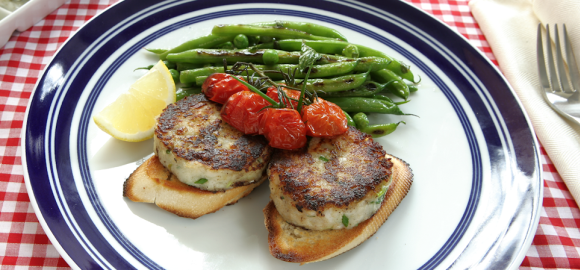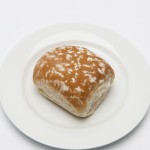Recipe & image supplied by the Seafish Authority: www.fishisthedish.com
Cod is in season from May through to September; if you’re making this outside of these months try using another seasonal white fish such as coley or haddock. Buying seasonal fish means you are buying fish outside of their breeding season and will help to ensure you are buying fish in a sustainable manner.
You do not need a food processor for this recipe; using one will just make a finer textured burger ... and less mess!
Skills Check
Follow a recipe; follow food safety & hygiene rules; tidy away; use measuring spoons; chop using bridge/claw technique safely; snip herbs with scissors; shape e.g. burgers, fish cakes.
Allergens
Gluten | Mustard | Fish
May Contain: Milk | Sesame | Soya | Sulphites | Celery
(Please note the allergens listed are indicative only. Allergens vary depending on brand; check the labels on the products you use.)
Equipment
Measuring cups and spoons, bowl, fork, knife, chopping board, spoon, scissors.
Ingredients (serves 4):
- 2 cod fillets or any other white fish like coley, pollock, haddock, hake or whiting
- 2 tbsp red curry paste
- 2 tbsp coriander, chopped (or snipped with scissors in a jug)
- 1 tbsp brown sugar
- 2 dashes of lime juice
- 2 dashes of fish sauce
- 4 spring onions, finely sliced (or snipped with scissors in a jug)
- Black pepper
- 4 burger buns
- Seasonal salad (lettuce, tomato, onion)
Method
- Mince the fish in a food processor* with the curry paste, coriander, brown sugar, lime juice and fish sauce.
- Spoon into a bowl, season with pepper and mix in the spring onions.
- Divide the mixture into 4 and shape the burgers by rolling the mixture into a ball before flattening between your hands. For best results refrigerate the uncooked burgers for 2 hours.
- When you are ready to cook your burgers, grill them at a fairly high heat for approximately 3 minutes on each side, so that the burgers take on a bit of colour on each side and are cooked through.
- Serve on a toasted burger bun with some seasonal salad.
*If you don’t have a food processor finely cut the fish into a bowl and then add the curry paste, coriander, brown sugar, lime juice and fish sauce and mix together.
So thinking about Cod-tastic Burgers ...

Bread is a good source of complex carbohydrates which gives us energy. It is also a good source of fibre and B vitamins. In general, wholemeal bread tend to be more nutritious than white, and it also contains more fibre.
Don’t forget your salad vegetables too! One of your 5-a-day.
Nutritional Information
| - | Energy | 1026kJ / 243kcal | 12% |
| Low | Fat | 5.7g | 8% |
| Low | Saturates | 0.9g | 5% |
| Low | Sugar | 6.4g | 7% |
| Med | Salt | 1.3g | 22% |
per burger, including bun, lettuce, tomato and onion
% of an adult's reference intake
Typical values per 100g: Energy 529kJ / 125kcal
Notes
A traffic light system is used on nutrition labels to make it easier to see which foods and drinks are lower in calories, fat, sugar and salt. Try and choose more ‘greens’ and ‘ambers’ and fewer ‘reds’, and stick to smaller portions of ‘reds’.
Just because a recipe or a food has a red traffic light doesn't mean you shouldn't eat it. Understanding why a food or recipe might have a red light can be helpful. For example oily fish is high in total fat and so any recipe containing oily fish is likely to be ‘red’ for fat. But it is recommended that we eat oily fish at least once a week because the type of fat it contains is beneficial for our health.
% Reference Intakes are also shown. Reference Intakes are guidelines about the approximate amount of particular nutrients and energy required for a healthy diet (based on an average-sized woman doing an average amount of physical activity). Most children will require less than these Reference Intakes. The contribution of one serving of a food or drink to the Reference Intake for each nutrient is expressed as a percentage.




